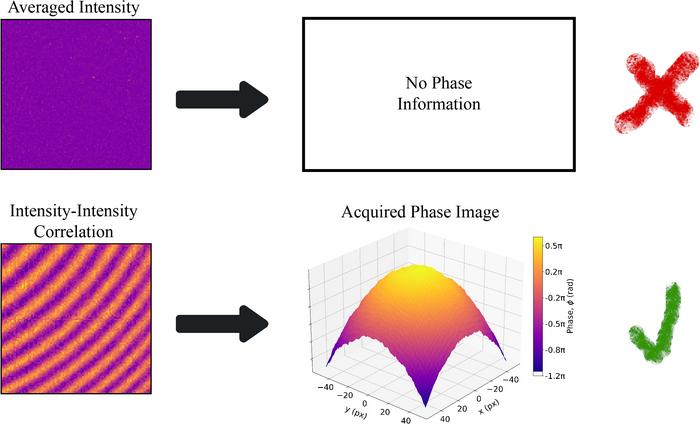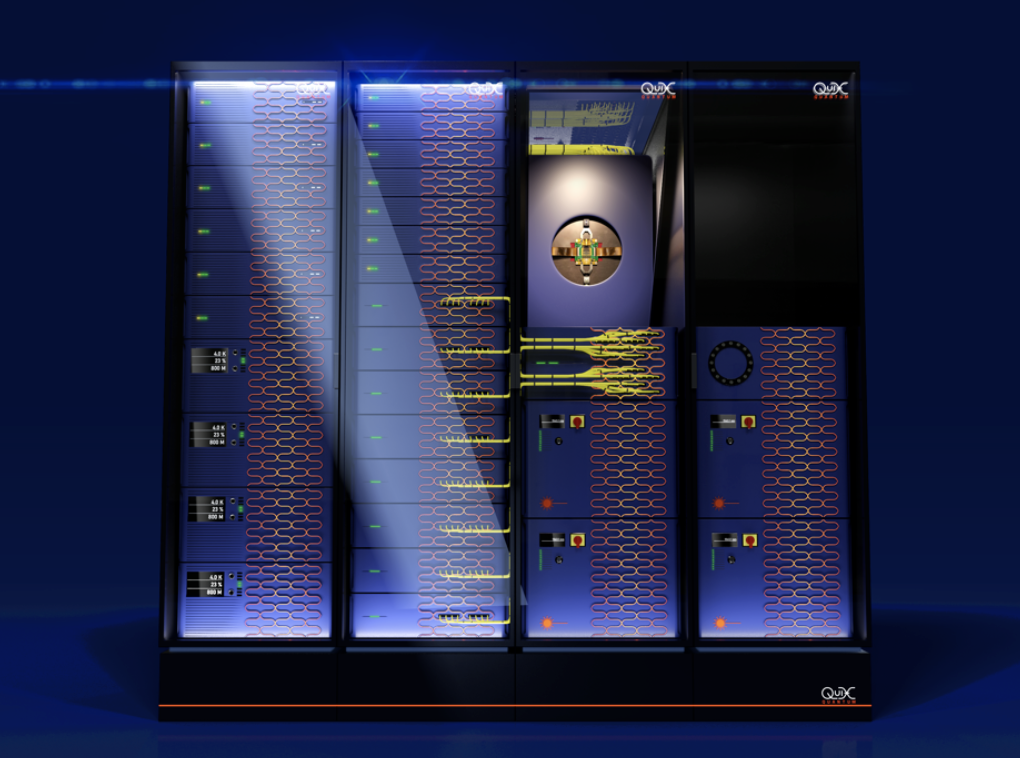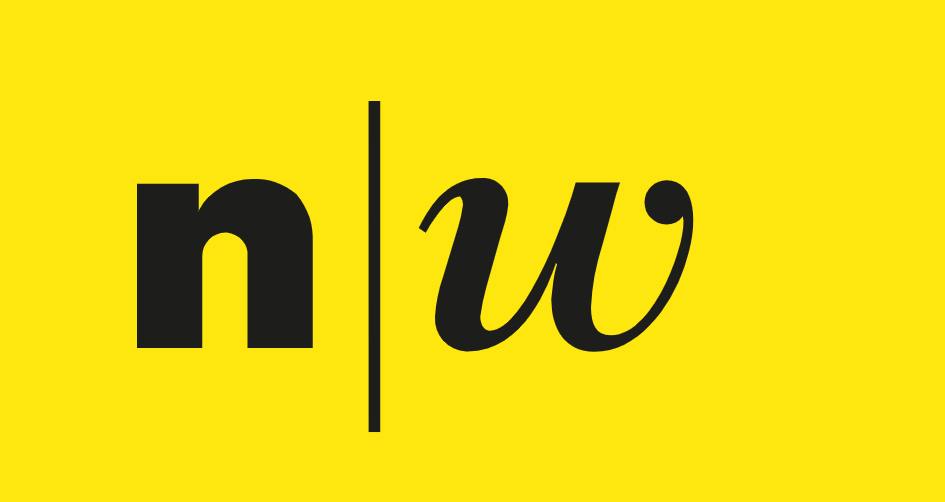Insider Brief
- Researchers have introduced a quantum-inspired phase imaging method based on light intensity correlation measurements that is robust to phase noise.
- The new imaging method can operate even with extremely dim illumination.
- Applications such as in infrared and X-ray interferometric imaging and quantum and matter-wave interferometry.
- Noise-resistant phase imaging with intensity correlation, (CREDIT Faculty of Physics, University of Warsaw)
PRESS RELEASE — Researchers at the University of Warsaw’s Faculty of Physics with colleagues from Stanford University and Oklahoma State University have introduced a quantum-inspired phase imaging method based on light intensity correlation measurements that is robust to phase noise. The results of the research have been published in the prestigious journal “Science Advances”. The new imaging method can operate even with extremely dim illumination and can prove useful in emerging applications such as in infrared and X-ray interferometric imaging and quantum and matter-wave interferometry.
No matter if you take photos of a cat with your smartphone or image cell cultures with an advanced microscope, you do this by measuring the intensity (brightness) of light pixel by pixel. Light is characterized, not only by its intensity but also by its phase. Interestingly, transparent objects can become visible if you’re able to measure the phase delay of light that they introduce. Phase contrast microscopy, for which Frits Zernike received a Nobel Prize in 1953, brought about a revolution in biomedical imaging due to the possibility of obtaining high-resolution images of various transparent and optically thin samples. The research field that emerged from Zernike’s discovery includes modern imaging techniques such as digital holography and quantitative phase imaging. “It enables label-free and quantitative characterization of living specimens, such as cell cultures, and can find applications in neurobiology or cancer research” explains Dr Radek Lapkiewicz, head of the Quantum Imaging Laboratory at the University of Warsaw’s Faculty of Physics.
However, there is still room for improvement. “For example, interferometry, a standard measurement method for precise thickness measurements at any point of the examined object, only works when the system is stable, not subject to any shocks or disturbances. It is very challenging to carry out such a test, for example, in a moving car or on a shaking table,” explains Jerzy Szuniewcz, a doctoral student at the University of Warsaw’s Faculty of Physics. Researchers from the Faculty of Physics at the University of Warsaw with colleagues from Stanford University and Oklahoma State University decided to tackle this problem and develop a new method of phase imaging that is immune to phase instability. The results of their research have been published in the prestigious journal “Science Advances”.
Back to the old school

How did the researchers come up with the idea for the new technique? Already in the 60’s Leonard Mandel and his group demonstrated that even when interference is not detectable in intensity, correlations can reveal its presence. “Inspired by the classic experiments of Mandel, we wanted to investigate how intensity correlation measurements can be used for phase imaging” explains Dr Lapkiewicz. In a correlation measurement we look at pairs of pixels and observe whether they become brighter or darker at the same time. “We have shown that such measurements contain additional information that cannot be obtained using a single photo, i.e. intensity measurement. Using this fact, we demonstrated that in phase microscopy based on interference, observations are possible even when standard interferograms average out losing all the phase information and there are no fringes recorded in the intensity. With a standard approach, one would assume that there is no useful information in such an image. However, it turns out that the information is hidden in the correlations and can be recovered by analyzing multiple independent photos of an object allowing us to obtain perfect interferograms, even though the ordinary interference is undetectable due to the noise” adds Lapkiewicz.
“In our experiment, the light which passes through a phase object (our target, which we want to investigate) is superposed with a reference light. A random phase delay is introduced between the object and reference light beams – this phase delay simulates a disturbance obstructing the standard phase imaging methods. Consequently, no interference is observed when the intensity is measured, that is, no information about the phase object can be obtained from intensity measurements. However, the spatially dependent intensity-intensity correlation displays a fringe pattern that contains the complete information about the phase object. This intensity-intensity correlation is unaffected by any temporal phase noise varying slower then the speed of the detector (~10 nanoseconds in the performed experiment)and can be measured by accruing data over an arbitrarily long period of time – which is a game changer – longer measurement means more photons, which translates to higher accuracy.” explains Jerzy Szuniewicz, the first author of the work. Put simply, if we were to record a single film frame, that single frame would give us no useful information about what the object under study looks like. “Therefore, first we recorded a whole series of such frames using a camera and then multiplied the measurement values at each pair of points from every frame. We averaged these correlations, and recorded a full image of our object,” explains Jerzy Szuniewicz. “There are many possible ways to recover the phase profile of an observed object from a sequence of images. However, we proved that our method based on intensity-intensity correlation and a so-called off-axis holography technique provides an optimal reconstruction precision” says Stanisław Kurdziałek, the second author of the paper.
A bright idea for dark environments
A phase imaging approach based on intensity correlation can be widely used in very noisy environments. The new method works with both classical (laser and thermal) and quantum light. It can also be implemented in the photon counting regime, for example using single photon avalanche diodes. “We can use it in cases where there is little light available or when we cannot use high light intensity so as not to damage the object, for example a delicate biological sample or a work of art,” explains Jerzy Szuniewicz.
“Our technique will broaden prospects in phase measurements, including emerging applications such as in infrared and X-ray imaging and quantum and matter-wave interferometry” concludes Dr Lapkiewicz.
This work was supported by the Foundation for Polish Science under the FIRST TEAM project “Spatiotemporal photon correlation measurements for quantum metrology and super-resolution microscopy” co-financed by the European Union under the European Regional Development Fund (POIR.04.04.00-00-3004/17-00). Jerzy Szuniewicz also acknowledges support from the National Science Centre, Poland, grant number 2022/45/N/ST2/04249. S. Kurdzialek acknowledges support from the National Science Center (Poland) grant No.2020/37/B/ST2/02134. M.ahiri. acknowledges support from the U.S. Office of Naval Research under award number N00014-23-1-2778.
For more market insights, check out our latest quantum computing news here.



















